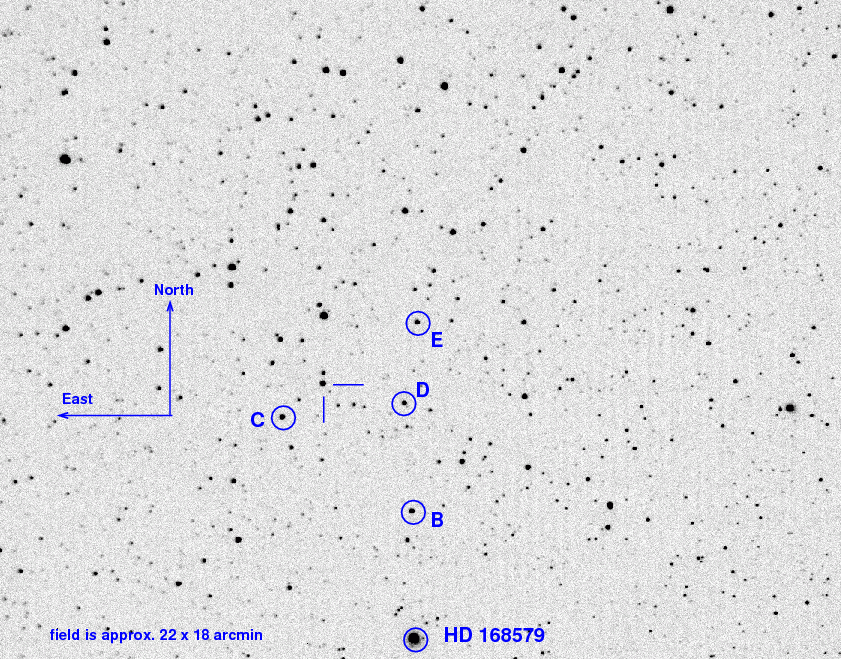
On the night of Aug 26/27 2018, I once acquired data through very bright, hazy skies on the likely black-hole system MAXIJ1820+070, (also known as ASASSN-18ey ).
The main setup was:
Notes from the night:
Some of the electrical outlets around the concrete pad were still under repair, with wires sticking out into the air.
This optical and X-ray and radio transient is likely a black hole accreting material at a higher-than-usual rate. It has been the subject of many observers over the past few months -- see the trail of telegrams that include
The object is located at
RA = 18:20:21.9 Dec = +07:11:07.3
A chart of the field is shown below. The size of the chart is about 22 by 18 arcminutes.
I've marked the location of several comparison stars, which also appear in light curves below. Stars C, D, and E are mentioned by the Tomoe Gozen team in ATel 11426, but all three are rather red, with (B-V) ranging from 1.14 to 1.37. Star B is one of the bluest nearby bright stars, with (B-V) = 0.52.
star UCAC4 B V ---------------------------------------------------- B 486-079513 12.975 12.454 C 486-079608 13.968 12.830 D 486-079523 14.637 13.272 E 487-077858 14.637 13.272 ----------------------------------------------------
I ran the camera at -12 C. Nothing out of the ordinary.

The sky value shows that clouds arrived at the end, causing me to quit. Sky values were high due to the haze and full moon.

Here's a record of the telescope's drift. A consistent drift of stars to the south as the telescope moved west of the meridian means the altitude needs a small turn CW.
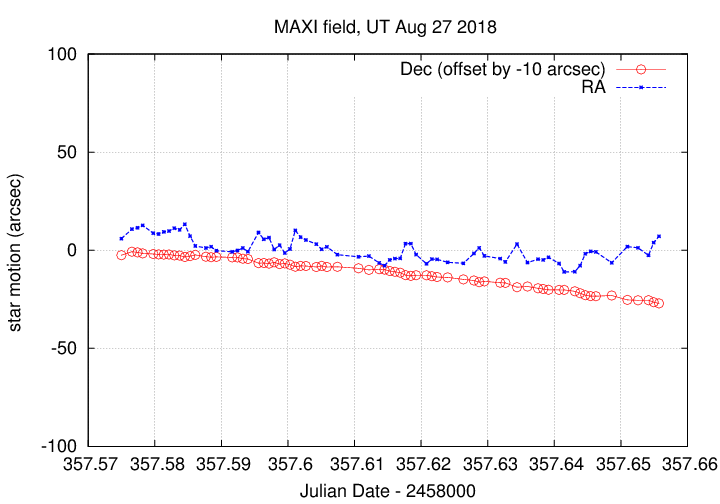
The number of objects detected -- I required 20 objects for an image to be included in the ensemble.
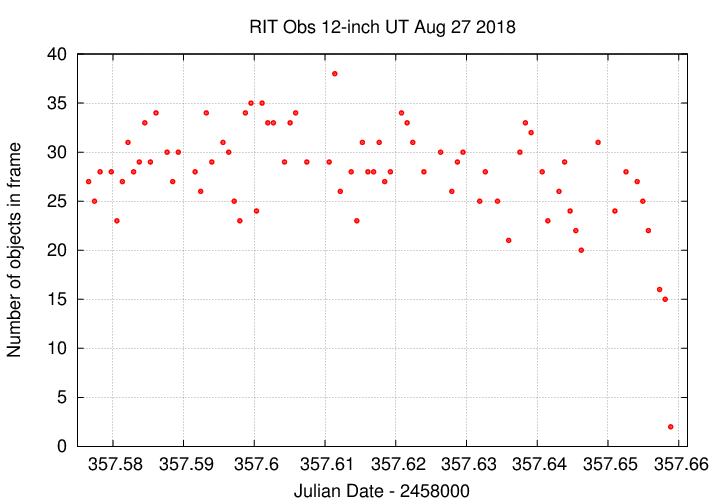
I used an aperture with radius 5.0 pixels.

I discarded images which had obvious trailed stellar images, using a threshold of "round > -0.45", a somewhat more extreme value than usual (removing 33 of the 110 raw images).
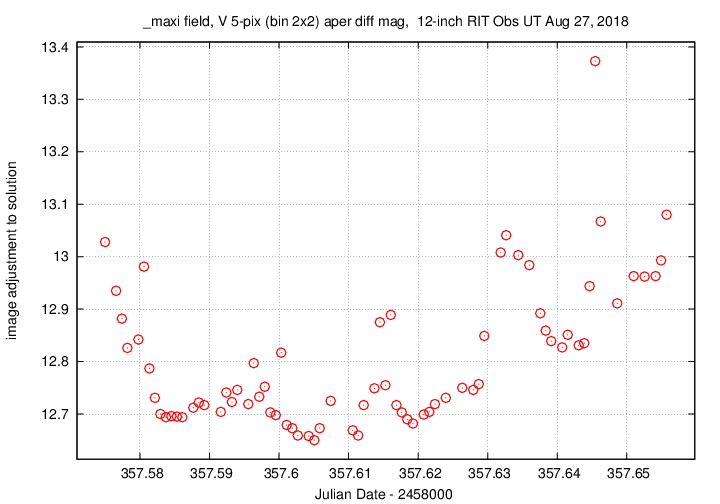
Using aperture photometry with a radius of 5 pixels (binned 2x2, each pixel is 1.34 arcsec, so a radius of 6.7 arcsec), I measured the instrumental magnitudes of a number of reference stars and the target. Following the procedures outlined by Kent Honeycutt's article on inhomogeneous ensemble photometry, I used all stars available in each image to define a reference frame, and measured each star against this frame.
Sigma-vs-mag plots show that the floor was about 0.012 mag overall, which is pretty bad.
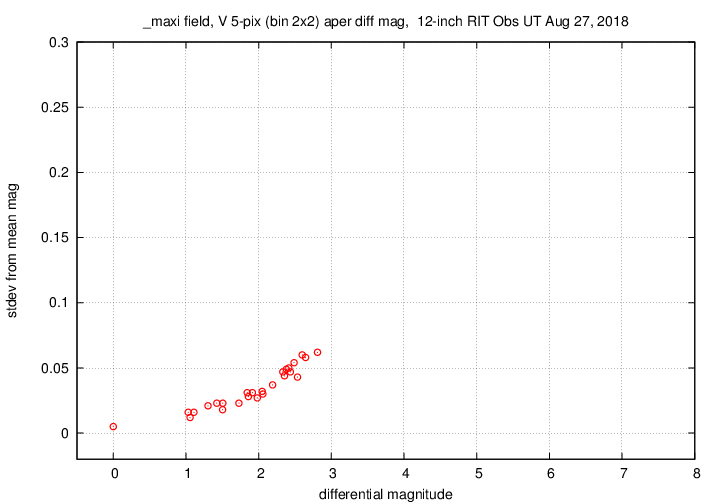
Here are light curves of the variable and the field stars.
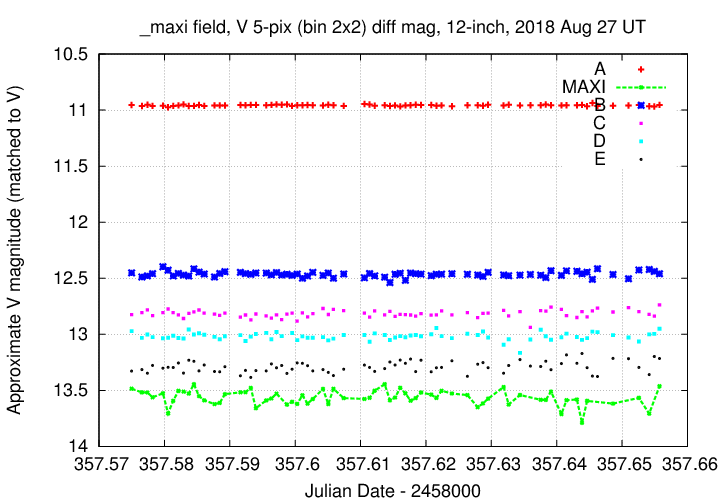
I used the UCAC value for the V-band magnitude of star "B" = UCAC4 486-079513 to shift the ensemble magnitudes to the standard V-band scale.
Here's a closeup on the variable. I'll connect the dots to make its behavior a bit easier to see.
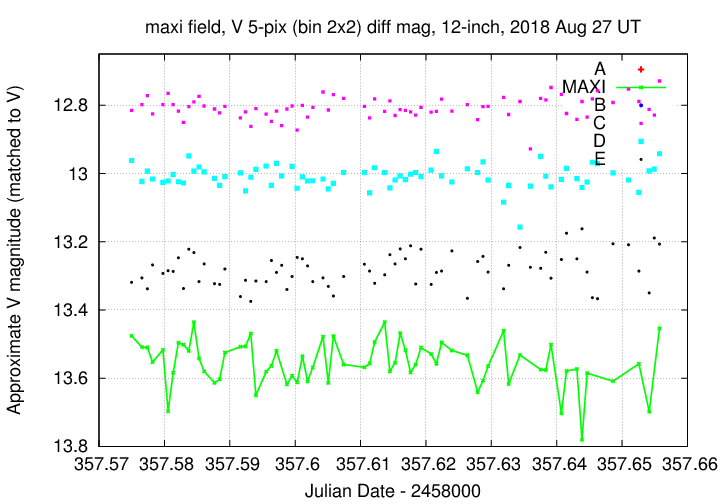
You can download my measurements below. A copy of the header of the file is shown to explain the format.
# Measurements of MAXIJ1820+070 made at RIT Obs, UT 2018 Aug 27, # in mediocre conditions, # by Michael Richmond, # using Meade 12-inch LX200 and ATIK 11000. # Exposures 60 seconds long, V filter. # Tabulated times are midexposure (FITS header time - half exposure length) # and accurate only to +/- 1 second (??). # 'mag' is a differential magnitude based on ensemble photometry # using a circular aperture of radius 5 pix = 6.6 arcseconds. # which has been shifted so UCAC4 486-079513 has mag=12.454 # which is its V-band magnitude according to UCAC4. # # UT_day JD HJD mag uncert Aug27.07498 2458357.57498 2458357.57767 13.476 0.045 Aug27.07656 2458357.57656 2458357.57925 13.509 0.047 Aug27.07740 2458357.57740 2458357.58009 13.510 0.047
Last modified 8/27/2018 by MWR.